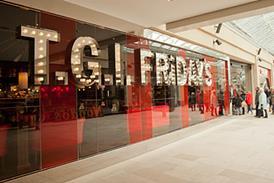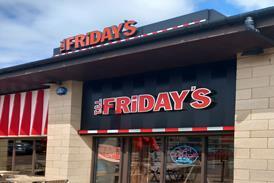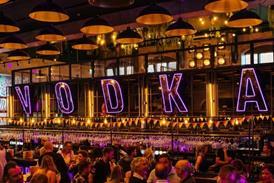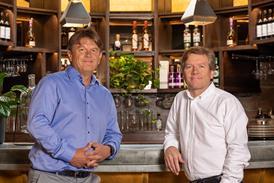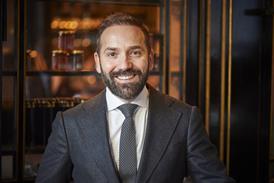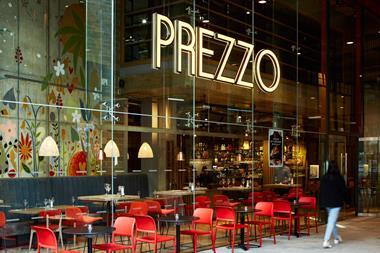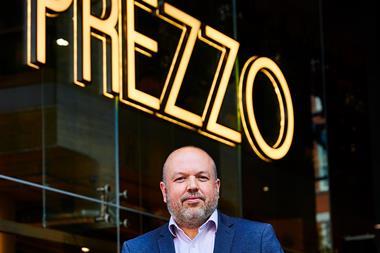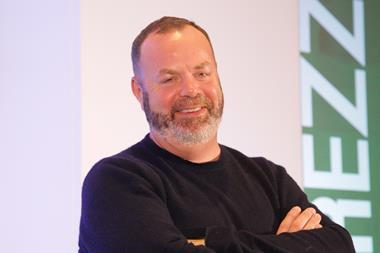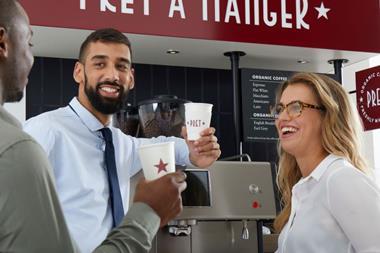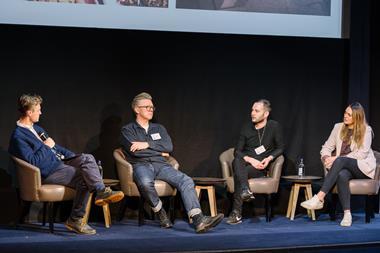Innovation is essential if brands are to remain relevant but, when it comes to technology, companies often struggle to keep up with the rapid pace of change. Flypay’s Tom Weaver examines the problem
Innovation is essential if brands are to remain relevant but, when it comes to technology, companies often struggle to keep up with the rapid pace of change. Flypay’s Tom Weaver examines the problem
Just off the coast of Portsmouth, in the Solent, sit four hulking sea forts, commissioned during the premiership of Lord Palmerston to protect the country from a French invasion. Napoleon III had become Emperor of France in 1851, and the docks at Portsmouth were a key strategic asset that needed protection. Constructed from granite and iron, these forts were at the forefront of cutting edge Victorian technology. Not a simple task, and politically challenging, the first stone was finally laid in 1866, and the final fort was completed 14 years after that in 1880. By that time, the threat of a seaborne invasion from France had passed, they were called ‘Palmerston’s Follies’ and were never used for their intended purposes.
I ponder this lesson often – technology projects often take place for the best of reasons. Some, however, are so complex they take a long time to complete. In the meantime, the world moves on and the requirements of the business, and indeed its customers, fundamentally change between the launch of a project and its delivery.
The world in the late 19th century moved at a snail’s pace, compared to society today. Now, two years can feel like a technological eternity. We are passing through entire technological eras, and it’s still only 10 years since the smartphone reached mass adoption and changed our lives.
How can the eating-out sector, particularly larger groups, even begin to innovate when the pace of technological evolution is so fast and the internal hurdles and change processes take so long? If it takes three years for an operator to assess and evaluate a new technology, 18 months to procure and install it, that operator has already spent nearly half a decade before even knowing if something else might come along to change the game.
Managing existing sytems
Pat Bakey, President of IT giant SAP points out that 80% of retail IT spend goes into managing legacy environments. That is a staggering statistic, and one that begs the question of how to keep up, let alone get ahead of the curve.
When it comes to technology, hospitality operators need one thing: the ability to try things, faster. The ability to – using overused Silicon Valley phrases – ‘fail fast’ and ‘fail often’.
There is a plethora of incredible technology out there waiting to not only transform restaurants, but the way that operators interact with consumers, suppliers and partners. The tech giants – what we refer to as the 800lb gorillas of technology – have hundreds of millions and, in some cases, billions of consumers they are engaging with daily. These consumers are used to seamless ‘one-tap’ payment, single sign-on, a mind-boggling range of choice, while expecting to be in complete control of their own experiences – even in the out-of-home environment.
The tech giants are already actively considering ways to disrupt consumer decision-making in retail and to ‘play’ in the hospitality space – and as we are seeing from the aggregated delivery space, there is a lot of money at stake. These players have the potential to deliver more customers, more visits or a higher spend. However, this will only deliver benefits for operators who are able to engage with the technology being deployed.
For any new technology or service to work at its best operationally, while de-livering maximum benefit, it will inevitably need to be integrated with existing systems. Right now, booking and delivery giants default to non-integrated approaches, because integration is hard at scale. It is, therefore, easier and quicker to introduce extra hardware or digital work-arounds.
Using up staff time
This is not a sustainable approach. Non-integrated solutions take up valuable staff time, lead to more errors, clutter valuable surfaces and create information silos. Further tools are then required to consolidate reporting and make sense of the total information coming into the business. It goes without saying that integrations add a layer of complexity. However, when an operator wants to bring together ‘best of breed’ software from various suppliers, across say data mapping, training, support services and the point-to-point integrations required, it is essential that existing and new systems can talk to each other.
An integrated world allows new possibilities in “days, not months”. Recently, we worked on a couple of projects where we were able to dramatically transform the timespan involved in delivering on-site innovation. The first was with Barclaycard, which has built its unique Dine & Dash payment app, using our existing Universal Bill Information API and Universal Payments API, to create something innovative in weeks, which they are now trialling in Prezzo. The second is with a major payment gateway provider, who we are working with on a prototype to enable its payment terminals, deployed in hundreds of thousands of locations, to retrieve a specific bill, with line item detail, split it and even interface with app-based payments – in days not years.
Winners in the market
The next five years will inevitably see hospitality operators who know their customers and can innovate at speed, win in the market. Those that cannot will remain viable, but will fall further behind in the ability to work with the major technology players who are re-shaping consumer expectations, whilst guiding how and where these shared customers choose to spend their time and money.
One side of the innovation coin is to enable and work with external innovators. However, for a large-scale operator, it’ll be critical to remove the impediments and ‘take back control’ over internal information and systems. Having a multitude of systems with ‘point-to-point’ integrations between them, means critical business information is still stored on Excel spreadsheets; and having no way to unify information can paralyse groups for years. That’s not an overnight problem to solve, but the ‘single step’ in that journey of a thousand miles, is to start with the most critical restaurant system – the EPoS, the most urgent service provider integration, and then work outwards.
Hospitality operators provide a crucial service in society. To keep our businesses at the heart of the economy, we need to provide a seamless customer experience via systems that talk directly to each other – and do so fast. This needs to happen before the world moves on and requirements evolve further.
■ Tom Weaver is the chief executive of FlyPay


